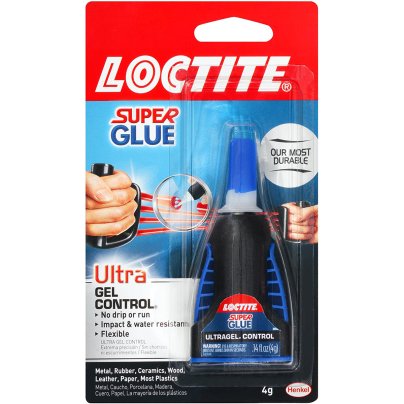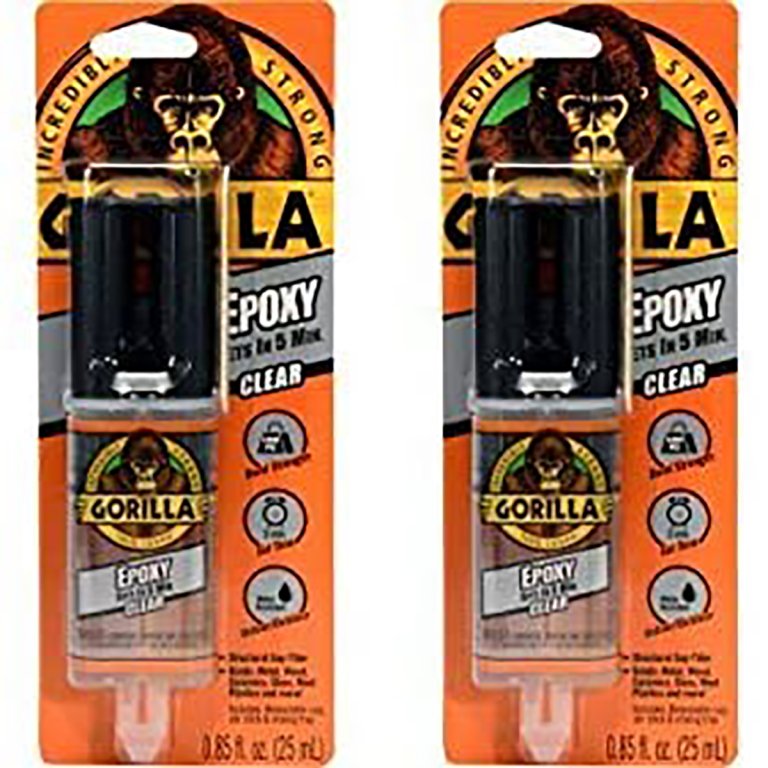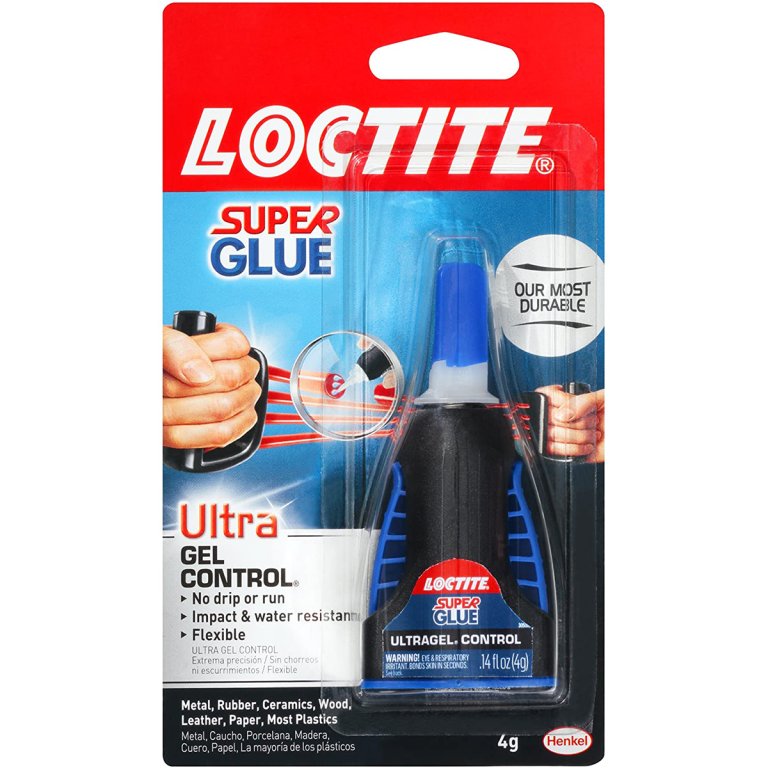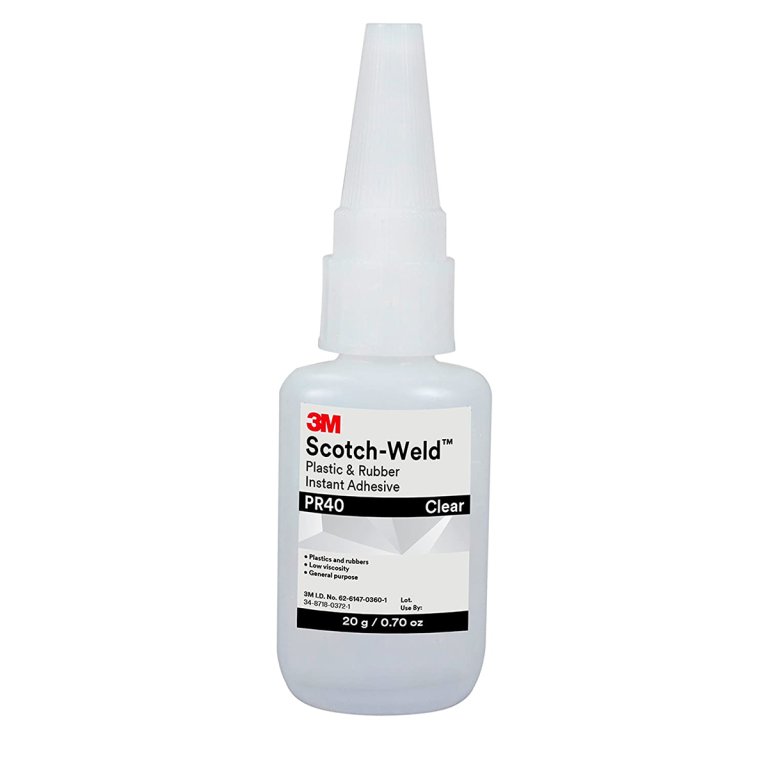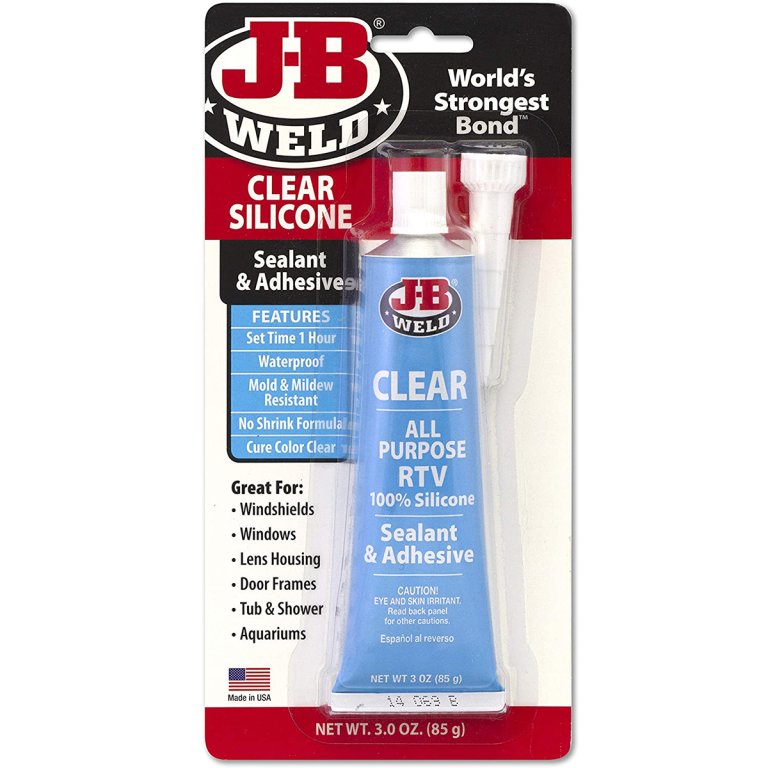
We may earn revenue from the products available on this page and participate in affiliate programs. Learn More ›
When it comes to gluing rubber to rubber or a variety of diverse substrates, the project’s success depends on selecting the optimal adhesive for the job. Manufacturers offer a range of glue types for specific types of rubber, so choosing the best adhesive for rubber can be challenging.
The best options provide a strong, durable bond that’s permanent when it’s fully cured. In some cases, weather resistance and waterproofing are desired. For other jobs, the flexibility or elasticity of the bond is important. The difficulty of bonding two smooth and nonporous substrates may present an additional problem.
Read on to discover products that offer some of the best glue for rubber adhesion to meet the challenges of many DIY projects.
- BEST OVERALL: Gorilla Epoxy
- BEST BANG FOR THE BUCK: Loctite Super Glue Ultra Gel Control
- BEST PLASTIC TO RUBBER: 3M Scotch-Weld Plastic & Rubber Instant Adhesive PR40
- BEST SILICONE ADHESIVE: J-B Weld Clear Silicone Sealant & Adhesive
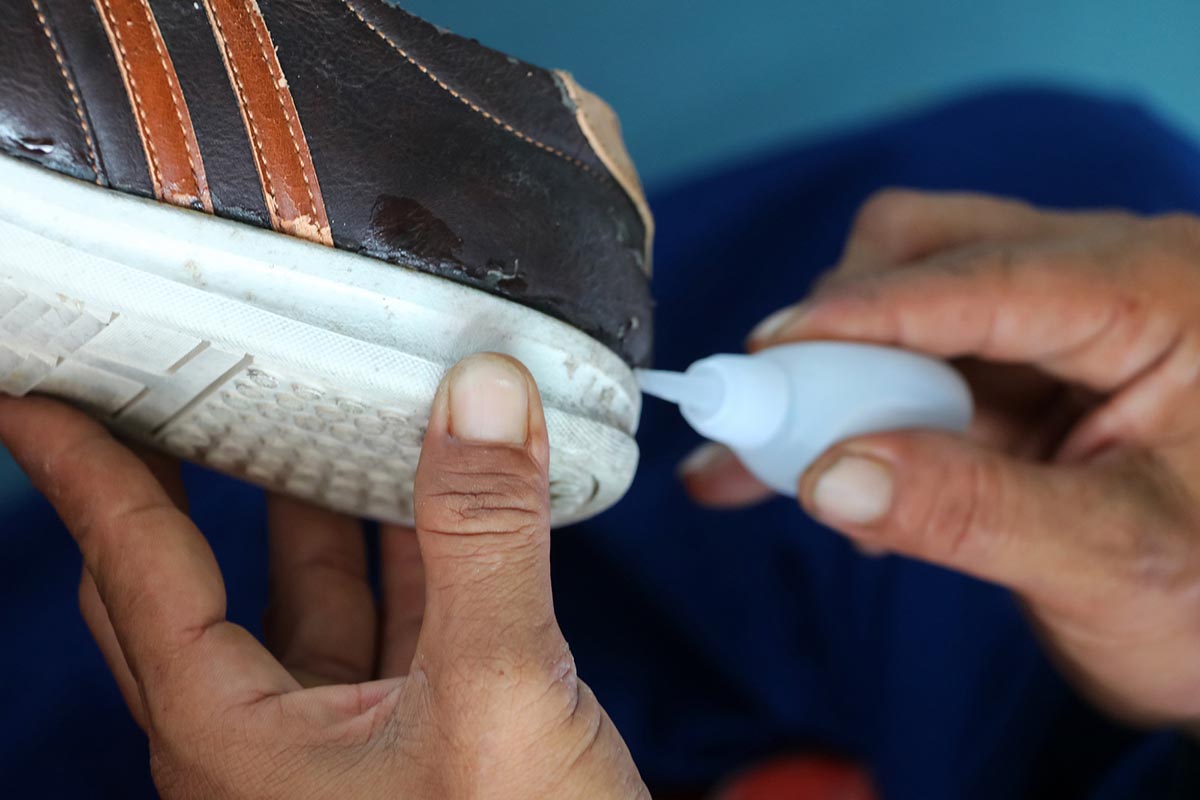
Types of Glue for Rubber
Manufacturers offer several types of glue that work well with specific types of rubber. These include one-part glues such as super glue that’s also called cyanoacrylate adhesive (CA) and silicone-based glue. Alternatively, some rubber adhesion projects require two-part adhesives that require mixing for activation. These include epoxy resin and structural adhesive glues.
Super Glue
Super glue is an acrylic resin and a viable choice as an all-purpose glue for rubber. Its primary adhesive ingredient is cyanoacrylate. This ingredient is an acrylic monomer that requires moisture for curing.
In only a few minutes, cyanoacrylate begins to set up, forming a strong and rigid bond. While the quick setup time facilitates swift completion of assembly and repair jobs, it limits a user’s opportunities for adjusting or repositioning surfaces. Therefore, it’s important to work fast when using super glue.
Upon curing, cyanoacrylate transforms into a plastic state. Allow 24 hours for most super glue products to fully cure.
Epoxy Resin Glue
An epoxy resin glue consists of two parts: a resin and a hardener. Users mix the two parts together in a 1:1 ratio immediately before applying the adhesive to a substrate.
For storage, the resin and the hardener are housed in two separate containers. A double syringe system is often used for storing, mixing, and applying epoxy resin. With the double syringe, these steps are neat and simplified for the user.
Epoxy resin forms a waterproof and weatherproof bond. Additionally, it’s useful for filling gaps. Therefore, it’s useful for outdoor applications as well as indoor repairs around the home.
Two-Part Acrylic Glue
Certain rubber substrates are known to pose problems when users try to adhere them. These include polyethylene, polypropylene, polytetrafluoroethylene (PTFE), and ethylene propylene diene monomer (EPDM) rubbers. With slippery, smooth, and nonporous surfaces, it may be difficult for glues to form bonds on these materials. Two-part structural acrylics can work well for these difficult gluing jobs.
For activation to occur, two-part acrylic glues require mixing. The user purchases these adhesives in two separate parts and mixes them immediately before applying the adhesive. Since they are stored separately, two-part adhesives are more stable than the premixed types. Therefore, they demonstrate a longer shelf life, and users may count on their efficacy after storing for extended periods.
Silicone-Based Glue
Silicone rubber is exceptionally resistant to high heat. For this reason, it’s used in making ovenware and cookware. Additionally, manufacturers use silicone rubber in the production of gaskets, O-rings, medical devices, and prosthetics.
The best glue for silicone rubber is a silicone-based adhesive. This type of glue creates bonds that are flexible (not rigid) after curing. Additionally, they resist damage from high temperatures and exposure to chemicals and water.
Silicone rubber is slippery in nature. If an adhesive bond does not hold, the user can apply a primer to increase the surface friction before applying the silicone adhesive.
What to Consider When Choosing Glue for Rubber
When choosing an adhesive product for rubber, the first step is to identify the type of rubber to be glued. From there, shoppers can determine the best type of glue, keeping in mind various factors such as weather resistance, flexibility, set time, cure time, and more. These features are described below.
Type of Rubber
Before selecting the best glue for rubber to rubber or rubber to other substrates, it’s important to identify the type of rubber to be glued. The following list details types of rubber and their uses.
- Nitrile is a commonly used oil-resistant synthetic rubber. It’s used to make conveyor belts, hoses, O-rings, gaskets, and cable jacketing.
- Polyurethane is a synthetic rubber that is commonly used for molds and modeling.
- Natural rubber is sourced from the Pará rubber tree native to Brazil but now cultivated in many Asian countries. It’s used in gaskets, seals, mountings, and carpet backing.
-
Butyl rubber is flexible and bendable. For this reason, it’s used in applications where flexibility is required. Butyl rubber products include innertubes, seals, stoppers, linings, and valve seating.
Silicone rubber is exceptionally resistant to high heat. Manufacturers use it to make bakeware, cookware, O-rings, gaskets, medical devices, and prosthetics. - Rubber made from ethylene propylene diene monomer (EPDM) is used in automotive hoses and seals. It’s a difficult substrate for gluing, requiring a two-part acrylic glue for successful adhesion.
Application and Bond Strength
Shoppers may consider their rubber-adhesion needs when selecting the best glue for rubber. For example, some jobs require gap-filling and sealing while other jobs demand a superior bonding strength for load bearing. Taking these factors into consideration, users may select from a range of rubber adhesives.
Flexibility and elasticity are additional factors for consideration. If the object to be glued requires flexibility for its functional purpose, then the adhesive must yield a flexible bond when fully cured.
The ease of application is an additional consideration when selecting a rubber adhesive. Shoppers might search for glue application systems that prevent drips and spills. Of course, the size of the job is a determining factor, as some glue applicators yield only limited amounts of glue while others expel a bead of adhesive suitable for covering large surface areas.
Curing Time
Crafters and DIYers often need to distinguish between setting time and curing time. When glue is applied to substrates for adhesion, the set time indicates the period in which the glue is soft enough to allow repositioning or adjustment of the surfaces. In other words, the set time is the period from initial application until the glue hardens. Once it hardens, the surfaces can no longer be repositioned.
Super glue yields a fast set time. This means users have minimal time to realign the surfaces before the glue begins to harden. Users might read package labels to discern set times for various types of adhesives. These times may range from a few minutes up to 1 hour.
When the glue starts to harden and set, that’s only the beginning part of the curing time. Generally, adhesives for rubber typically require 24 hours for curing, which is when the product is chemically cured and offers the full properties of the product. DIYers should refrain from using or manipulating glued objects until the full curing time has elapsed.
Additional Features
For adhesive jobs where weather resistance is a factor in the project’s ultimate success, shoppers might search for durable waterproof glues. This is frequently a primary consideration, as rubber is often used in hoses, gaskets, seals, and linings that must be waterproof to function properly. The adhesive for an assembly or repair job is most effective when it is as waterproof as the rubber material.
Often, manufacturers package their adhesives in containers that facilitate ease of use. Shoppers might look for convenient containers that prevent drips and spills. Additionally, double-syringe systems simplify the mixing and application steps for two-part adhesives.
Depending on the particular job at hand, users may want to consider the viscosity of an adhesive. Low-viscosity glues flow easily, displaying a watery consistency. High-viscosity glues are thicker and therefore flow more slowly.
Our Top Picks
As every project may have slightly different requirements, we’ve gathered some of the best glues for rubber that work successfully in various rubber-adhesion projects. This list contains a variety of adhesive types manufactured by reputable companies and rated highly by experts in the field.
Best Overall
Gorilla Epoxy
Pros
- Easy-to-use syringe applicator
- Forms a structural, acrylic bond on difficult-to-bond substrates
- Dries clear
- Cured bond is resistant to water and solvent
Cons
- Requires mixing of the 2 parts for activation
Product Specs
- Volume: 0.85 fluid ounce
- Cure time: 24 hours
- Suggested uses: Household and automotive repairs for rubber, plastic, wood, metal, and ceramic materials
Gorilla 2 Part Epoxy is useful for repair jobs that require forming a durable bond as well as filling gaps and creating resistance to solvents. The applicator syringe facilitates a neat process, and the 5-minute setup time allows for repositioning the surfaces.
Use this two-part epoxy to adhere difficult-to-bond rubber and plastic substrates. These include polypropylene, polyethylene, polytetrafluoroethylene (PTFE), ethylene propylene diene monomer (EPDM) rubbers, and plastics. After application, the epoxy dries to a clear, nontoxic finish. It forms a strong and durable bond that is waterproof and solvent-resistant.
A two-part epoxy requires mixing for activation. Separate barrels in the Gorilla syringe applicator prevent the resin and the hardener from activating and hardening until the user applies the epoxy. While it takes about 24 hours to fully cure, items can be handled in about 30 minutes.
Get the Gorilla glue for rubber on Amazon, Ace Hardware, The Home Depot, Target, and Walmart.
Best Bang For the Buck
Loctite Super Glue Ultra Gel Control
Pros
- Multipurpose; adheres to multiple surfaces
- Gel formula is not as messy as liquid glues
- Patented control applicator makes for less mess
- Durable bond holds up to everyday use
Cons
- Gel is a thicker consistency than liquid
- Not useful as a gap filler
- Short set time does not allow opportunities for repositioning surfaces
Product Specs
- Volume: 0.14 fluid ounce
- Cure time: 24 hours
- Suggested uses: Assembly and repair of rubber, plastic, metal, ceramic, wood, and leather materials
Here’s another super glue that contains the acrylic monomer cyanoacrylate. Because of its gel formulation, the Loctite ultra gel glue offers the advantage of greater control and less mess on the job. Additionally, Loctite’s patented side-squeeze design provides precision application and airtight storage.
Use this super glue for rubber, plastics, metal, ceramics, wood, paper, and leather. It sets up in only 1 minute and cures in 24 hours. Because of its no-drip formulation, Loctite Ultra Gel glue is ideal for applications on vertical surfaces.
There’s no need to clamp the objects that are bonded with this super glue. It dries to a clear finish and forms a durable and flexible bond that resists vibration and impact.
Get the Loctite glue for rubber on Amazon, Ace Hardware, Target, Lowe’s, and Walmart.
Best Plastic to Rubber
3M Scotch-Weld Plastic & Rubber Instant Adhesive PR40
Pros
- Forms a strong bond on nonporous substrates
- Precision application from the bottle
- May be used with a primer for difficult adhesion jobs
- Low viscosity
Cons
- Requires a primer for adhesion on difficult-to-bond substrates
Product Specs
- Volume: 0.70 fluid ounce
- Cure time: 24 hours
- Suggested uses: Assembly and repair of plastic and rubber materials
The 3M Scotch-Weld adhesive forms strong and durable bonds between plastic and rubber surfaces. After 15 seconds, the item is safe to handle, and the adhesive cures in 24 hours to a clear finish. Users find this glue to be functional for the assembly of objects and multiple repair jobs around the home.
With its low viscosity, this glue flows neatly from the applicator bottle. The 3M company designed the glue container for precise application to eliminate messes. Users can pinch the container lightly for a precise drop of glue or squeeze for a bead of glue that covers a larger area.
This adhesive is a go-to favorite for gluing materials with smooth, nonporous surfaces. Add a primer, and the 3M Scotch-Weld glue creates strong adhesion of numerous difficult-to-bond substrates. These include nylon, polypropylene, polyethylene, and ethylene propylene diene monomer (EPDM) rubbers.
Get the 3M glue for rubber on Amazon and Strobels Supply.
Best Silicone Adhesive
J-B Weld Silicone Sealant & Adhesive
Pros
- Multipurpose adhesive
- Forms a waterproof bond
- Room-temperature vulcanized (RTV) silicone
- Resistant to high temperatures
Cons
- Set time is 1 hour, longer than some rubber glues
Product Specs
- Volume: 3 fluid ounces
- Cure time: 24 hours
- Suggested uses: Household and automotive repairs of rubber, ceramic, and plastic materials as well as waterproof sealing
This silicone-based adhesive from J-B Weld forms a strong, waterproof, and weather-resistant bond. It is room-temperature vulcanized (RTV); therefore, the silicone begins curing as soon as it’s exposed to air and moisture. It sets up in 1 hour and cures in 24 hours. After curing, the silicone adhesive is flexible and resistant to high temperatures.
J-B Weld silicone adhesive is useful for a variety of purposes, including automotive repairs and jobs around the home. This adhesive works with ceramic, glass, carpet, bathtubs, showers, and rubber substrates.
Silicone rubber is slippery in nature. Therefore, it may be necessary to scratch the silicone surface, creating increased friction for bonding to take place.
Get the J-B Weld glue for rubber on Amazon, Ace Hardware, and Walmart.
Our Verdict
For general use in gluing rubber substrates, we recommend two cyanoacrylate adhesives. Gorilla Epoxy forms strong bonds between nonporous surfaces and receives high marks from users and industry experts. Loctite Super Glue Ultra Gel Control is a no-drip and fast- setting alternative that’s available at an economical price.
How We Chose the Best Glues for Rubber
To begin our research on the best rubber adhesives, we read eight articles containing information on various types of glues and types of rubber. These articles include product recommendations. We researched product descriptions for more than 12 glues before choosing the adhesives in our list of top picks. These include both one-part and two-part adhesives.
In addition to the initial eight articles, we consulted an additional 10 articles for further explanation regarding types of rubber and types of glue. We considered adhesives that glue rubber to rubber and rubber to plastic or metal. Additionally, we considered the distinctive qualities of silicone rubber and silicone-based adhesives. Finally, we looked for glues that offer ease of use, strong and durable bonds, and solutions to the adhesion challenges posed by smooth and nonporous surfaces.
Tips for Using Glue for Rubber
For best results in gluing rubber, it’s important to identify the exact type of rubber. Based on the type of rubber, DIYers can research the best glue for the adhesion job.
Once the user acquires the most appropriate glue for the job, the next step is to prepare the substrates. After preparation, DIYers can simply follow the manufacturer’s directions and then allow time for the glue to cure.
- Use a type of glue recommended for the specific type of rubber.
- Purchase a small amount and try out the glue in a small application before using it in a bigger adhesion job.
- Prep the rubber surface with isopropanol solvent, which is in rubbing alcohol. (Acetone may be too harsh.)
- Some slippery rubber surfaces may require primer before gluing.
- Some rubber substrates may require sanding or scratching to increase the surface friction for bonding.
- For safety reasons, work in a well-ventilated area.
- Cover the work surface with a drop cloth or paper in case of drips or spills.
- Follow the manufacturer’s instructions regarding application of the adhesive.
- Note the setup time to facilitate repositioning the adhered substrates before the glue hardens.
- Allow the full curing time before manipulating the glued objects.
FAQs
Crafters and DIY enthusiasts may need to glue rubber substrates in the course of pursuing their favorite hobbies. Additionally, anyone who makes home or auto repairs may run into the occasional need to glue rubber objects to various surfaces. The most advantageous approach for these jobs is to identify the specific type of rubber and to research the best rubber glue for the job. Read on for frequently asked questions and answers regarding rubber materials and the best choices in rubber glue.
Q. How do I find out if a material is PVC or rubber?
Rubber demonstrates a greater level of elasticity than polyvinyl chloride (PVC) plastic, so a rubber object can stretch and then contract back into its original shape.
Q. Can I use hot glue on rubber?
Hot glue is not the best adhesive for rubber; it will not stick to many smooth and slippery surfaces (such as silicone rubber). Instead, a cyanoacrylate adhesive is used.
Q. How do I glue latex?
Rubber cement works well with latex. It’s available at most stationery and office supply stores. Special latex glue is a good choice, as is super glue (with cyanoacrylate).

